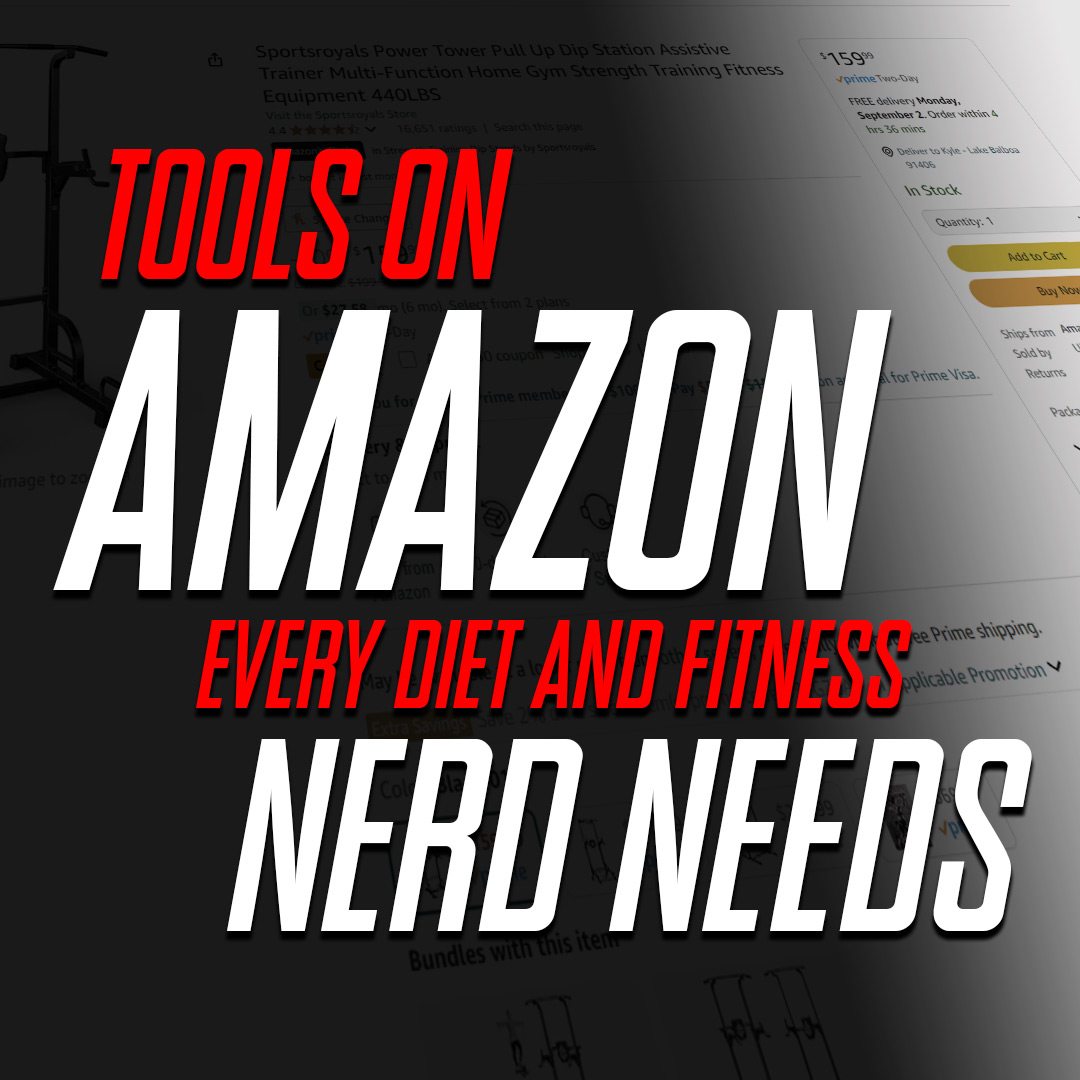
Eating when you’re not hungry is a recipe for disaster during weight management. The problem is, our bodies are sometimes tricked by a Pavlovian response to food and we unknowingly over eat. Knowing how to tell the difference between hunger and cravings is a vital mental tool in your weight-loss journey.
In This Article…
- Pavlovian Response
- What Is Real Hunger?
- Why Does My Stomach Rumble?
- Thirst & Hunger
- Malnutrition
- Eating Too Fast
- Exercise & Hunger
- Do Your Best To ‘Not Be Hungry’ Instead Of ‘Full’
- How Can I Tell If I’m Hungry?
First and foremost, let’s discuss the difference between starving and craving. For this article, starving means “being hungry” as opposed to “emergency malnutrition induced by crash landing in the remote wilderness with your JV soccer team”.
Starving is when your body physically needs food in order to continue operating at max efficiency. Without food, you will feel tired, weak, perhaps lose focus on your daily tasks, and maybe even experience a loud and embarrassing rumble from your stomach.
Craving is when you see, smell, or think about food and want to revel in the sensory roller coaster it provides. This is often a result of the Pavlovian response our brain sends out when stimulated by the foods we love.
Pavlovian Response
In case you don’t know, Ivan Pavlov was a Russian physiologist who, among other things, discovered that the brain can react to unrelated stimuli and make us think of something else. This became known as the Pavlovian response, or Pavlovian conditioning.
To prove his theory, Pavlov conducted an experiment where he would ring a bell every time he fed a group of dogs. Over time, the dogs associated the sound of the bell with the act of receiving food and would drool all over the floor regardless if they got food or not. The sound of the bell was enough to trigger their biological response to genuine hunger.
Fast-food companies are great at this. They’ve conditioned us over the years to associate their jingles, color schemes, logos, and even certain smells with their product. This makes their marketing campaigns a lot more effective than we like to give them credit for. The sooner you recognize this is happening, the sooner you can combat your body’s insistence that it is hungry when it, in fact, is not.
What Is Real Hunger?
‘Real’ hunger, or what we’re referring to as starving, is basically when your stomach has run out of things to digest and therefore you experience a drop in blood sugar. There are four hormones that affect hunger: ghrelin, leptin, peptide tyrosine-tyrosine (PYY), and insulin. The latter, insulin, is the one most people have heard of and understand, so that’s primarily the focus of this article.
When you eat, your saliva, stomach, and intestines break down the food so your body can transport the nutrients where they need to go. As this happens, your pancreas secretes insulin. Insulin breaks down food into glucose, or sugar, which it then converts to energy.
After a while, the insulin converts all the food it can into glucose and then stops. Your body uses the glucose for running, swimming, or twerking dat booty until your blood sugar drops. The resulting drop in blood sugar makes you feel hungry, thus starting the process over.
Generally, your body is pretty good at regulating the rise and fall of your blood sugar. A common exception to this is diabetics, whose insulin response does not function properly and causes a fast rise or fall in blood sugar levels that can be dangerous to their health.
For the rest of us, our body fully digests and converts our food into energy in roughly four hours. Therefore, most people try to eat breakfast around 8:00am, lunch at 12:00pm, and either a snack or dinner around 4:00pm, then the opposite (snack or dinner) at 8:00pm. This eating schedule is in line with our natural biology and works well for many people.
There are a billion and a half alternate diet schedules out there, but arguably two of the most common right now are the “Grazing” and “Intermittent Fasting”.
Grazing
The theory behind this diet is that instead of three to four large (500-600 calorie) meals a day, you spread your meals into five or six smaller (300-400 calorie) meals a day. The idea is that you keep your stomach digesting all day and secreting a steady stream of insulin to manage your blood sugar levels and stave off hunger indefinitely.
Intermittent Fasting
The theory behind this diet is that an individual consumes all their calories within an eight-hour window each day. A common window is 1:00pm to 9:00pm. The idea is that you burn more calories with less effort since your body has longer between meals, which results in faster weight loss. It also trips up your insulin response and, in a way, recalibrates it, letting you feel satisfied with less food in your system.
This is after the initial hangry adjustment phase.
There is considerable evidence that traditional, grazing, and intermittent fasting all have health and weight loss benefits. There is also evidence that they aren’t that much different, biologically speaking. I’ve tried them all and currently prefer a traditional three-meals-and-a-snack approach. It helps me feel satiated and keeps my energy levels up. I suggest you try each of them for a month and see what gives you the best results.
Study 1 Shows No Significant Difference
Study 2 Shows No Significant Difference
Study 3 Shows No Significant Difference
(Obviously, methodology and sample size are a big factor, but the general consensus among most research I found was ‘do whatever works for you’. I will note that intermittent fasting seems to have had more research done, and results are often favorable. )
Anyway, back to hunger…
Why Does My Stomach Rumble?
When we get legitimately hungry, our stomach does a Chewbacca impression and lets the rest of the world know it’s a whiny brat. This is commonly referred to as a hunger pang. But why?

When food is in your stomach, the muscles contract to push food along through your intestines. This process is known as peristalsis. When there’s no food left for your stomach to transport, it squeezes air into your intestines instead and then the Chewbacca impression comes out.
The Relationship Of Thirst & Hunger
Most people don’t drink enough water, and are therefore chronically dehydrated. This, mixed with electrolyte deficiencies, makes us feel weak and fatigued, often thinking we need food to fix the problem. Unfortunately, eating could actually worsen dehydration, especially if you jump to sodium-packed fast-food as a quick and easy solution to your ‘hunger’.
My advice, if you feel hungry, then try drinking a glass of water. Don’t chug it, this isn’t a hydro homies frat party. Just sip it over the next twenty minutes and see how you feel. If you’re still hungry, make yourself a meal or grab an apple, banana, or similar healthy snack packed with vitamins and water.
Malnutrition
Sometimes when we’re hungry, we’re actually malnourished. Lack of proper vitamins, minerals, or macronutrients can cause a bunch of problems that our brains try to solve by eating. Your body feels like crap, you can’t think straight. Snickers says it satisfies and you NEED satisfaction, so what’s the harm?
Well, with sweets (admittedly my Achille’s heel) or processed foods from a fast-food joint, we can actually worsen our energy levels than if we just grabbed an orange.
Spikes in blood sugar caused by excessive sweets push our insulin response hard. Remember from above we talked about how insulin regulates hunger? Well, if it jumps up and down all day, you’re going to feel like crap. Snicker ‘satisfies’ because it spikes your blood sugar. Once that spike drops, you are immediately hungry again and grab another Snickers. The cycle continues.
Mix that with sugar being a natural diuretic, and processed foods having way more salt than they should, you’re inadvertently dehydrating and malnourishing yourself at the same time. On top of all this, those foods are high in calories, so we blow any weight loss goals we had out of the water.
Not good.
Eating Too Fast
It takes about twenty minutes for our brain to register that we’ve eaten. There’s just a lag between the hormones in your body as they balance out and the stretch receptors on your stomach, too slow to tell you to stop shoving pizza into your gob before you’ve already gone too far. So slow down and enjoy your food. I’m guilty of acting like Kirby too, but you’ll be better off enjoying your food like it was your last meal, every meal.

Exercise & Hunger
Have you ever started a workout kind of hungry and finished feeling fine? We usually reach for a protein or recovery shake after a workout anyway, but your actual hunger seems abated. If you don’t eat, it comes back with a vengeance about an hour later, but right after exercise, you feel fantastic. Why is that?
Exercise temporarily slows down your digestion as blood rushes to other parts of your body to maintain a high level of physical activity. It then uses stored fat as energy so you don’t feel a major drop in glucose levels. Once your heart rate slows down and everything goes back to normal, your glucose levels drop and you feel hunger.
This isn’t to say you’re not hungry, or shouldn’t reach for that recovery shake. I just think it’s an interesting thing to note.
Do Your Best To ‘Not Be Hungry’ Instead Of ‘Full’
There’s an important distinction between ‘hungry’ and ‘full’.
Being full means we’ve ate too much. We’re bloated, perhaps engorged, and probably feel lethargic. This is almost always because you ate too much, too fast. The easiest way to prevent this is to just slooow dooown. Remember, it takes roughly twenty minutes for your stomach and brain to shake hands and agree they’re satisfied. Give them time to communicate.
Eat just enough so that you no longer feel fatigue or hunger pangs, and then stop eating. You’d be surprised how little you actually need to eat to feel satisfied. Traditional American portion sizes have conditioned us to eat way more than we need to.
Break the mold.
How Can I Tell If I’m Hungry?
Understanding the difference between genuine hunger and a simple craving will save you money and grief. A few easy tips can help:
- Double check you’re not thirsty. Drink some water anyway, it’s good for you.
- Wait at least twenty minutes after your initial ‘hunger’ trigger (especially if it could be a Pavlovian response to an ad).
- Slow down when eating. This will let your brain and body tell you when you’re truly full.
- Eat healthy foods to avoid malnutrition. Junk food is just that: junk.
Hopefully, this article has shed some light on the science of hunger. Developing the mindfulness to spot your cravings is the first step. Once you’ve conquered that, the other stuff can fill in the gaps. Nobody wants to feel hungry, and nobody should. Spend some time learning about your body and find what works best for you.
Additional Reading
Ghrelin: How To Control This ‘Hunger Hormone’ In Order To Lose Fat









